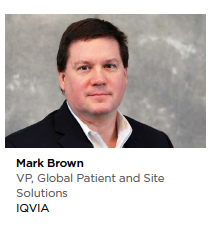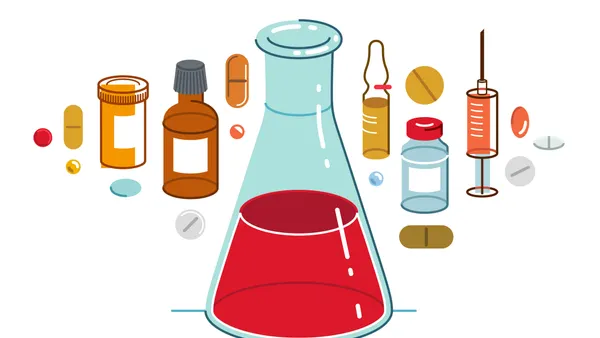 The pandemic has accomplished something that the pharma industry has been trying to achieve for years: it got consumers excited about clinical research. The rush to develop vaccines and 24/7 coverage of the virus’ spread captivated audiences and made all populations more aware of trial participation.
The pandemic has accomplished something that the pharma industry has been trying to achieve for years: it got consumers excited about clinical research. The rush to develop vaccines and 24/7 coverage of the virus’ spread captivated audiences and made all populations more aware of trial participation.
By leveraging the momentum of this unexpected education in clinical trials, IQVIA was able to engage at a personal level with consumers through data-driven direct-to-patient recruitment. Our strategies helped one sponsor developing a COVID-19 vaccine recruit thousands of diverse patients in a matter of weeks.
Direct-to-patient recruiting strategies have been used for decades, but these efforts were largely generic in the past. Patient recruitment professionals might create a few radio or TV ads, distribute flyers to doctor’s offices in targeted communities, then hope for a response. But leveraging artificial intelligence to craft and analyze the impact of ads, the direct-to-patient approach becomes more agile and adaptive, allowing recruitment teams to hone the advertisement in real-time for better results.
The Right “Call to Action"
Rapid recruiting of diverse populations was vital in the case of COVID-19 vaccine recruitment campaigns. IQVIA designed recruiting ads to engage specific populations via social media and other media channels, then customized them using analytics, machine learning, and artificial intelligence to deliver the optimal mix of interested patients.
Each ad featured language and imagery to attract specific populations, with different designs deployed in various communities. Once ads were in the market, the recruitment team at IQVIA tracked each design’s impact, monitoring how many people viewed the ad, what percentage of viewers clicked on it, and how response rates broke down by age, gender, and ethnicity.
This data-driven approach allowed the recruitment team to adapt the campaign in real-time based on which ads and specific features within each ad garnered the most substantial response rates among desired demographics.
Subtle Variations Make a Difference
For example, IQVIA tested two versions of an ad designed to attract participants from Black communities in the U.S. Both ads were nearly identical, featuring a young Black female doctor and a headline about a COVID-19 study enrolling in their area. Each ad also had a call to action at the bottom. One version featured the tagline “visit our website," while the other ended with “see if you qualify."
With the phrase “see if you qualify," the second ad generated a 56% increase in referrals compared with the version with “visit our website." It’s one of many examples that underscores how subtle variations can have a powerful impact on recruiting results.
It is surprisingly difficult to predict what phrases, images, and layout will generate the most significant response from patient populations or how even minor changes to language or design lead to better outcomes. During this trial, IQVIA tested hundreds of ads to maximize recruiting response rates. In many cases, something as simple as changing the color of a button or the link’s location had a measurable impact on results. This real-time agility enabled this sponsor to recruit more than 40,000 patients and meet diversity requirements in weeks. It is a testament to the power of data-driven recruiting as part of a patient recruitment and enablement strategy.
End-to-End Agility
While most companies today conduct AB testing when rolling out recruiting ads, the best results come when recruitment teams use analytics at every stage in the campaign process and dig deep enough into the data to create custom ads that appeal to specific demographics. This data-driven recruitment approach enabled by IQVIA’s unparalleled access to de-identified healthcare data, delivers patient targeting with greater precision and detail than is possible with limited identified consumer and patient data sets.
It evaluates study requirements and analyzes global healthcare data, IQVIA CORE datasets, and clinical research participation trends. We use those insights to develop advanced, protocol-specific patient models using artificial intelligence and machine learning. These models can identify specific consumer and patient data to create specific patient profiles and inform the design of messages and creative options that will speak directly to targeted patient populations.
Once ads are in the marketplace, recruitment teams use advanced analytics to monitor response rates over time, altering when needed to achieve the goal of targeting the right patient for the study at the right time with the right message and advertising creative.
Developing COVID-9 vaccines may have been an extreme example of how using artificial intelligence in direct-to-patient recruiting can help sponsors more rapidly fill their participant pipeline. But it taught us an important lesson that should impact all future clinical recruiting efforts.
Current methods for patient recruitment move too slowly to meet rising expectations for faster drug development. In an industry where recruiting speed is a critical measure of early success, sponsors and sites need more agile ways to attract diverse patients to their research. Using AI in their direct-to-patient recruiting efforts can help them create more targeted campaigns that resonate with specific patient populations and reduce cost, risk, and burden in the recruiting process.(PV)
IQVIA is a leading global provider of advanced analytics, technology solutions, and clinical research services to the life-sciences industry. IQVIA creates intelligent connections across all aspects of healthcare through its analytics, transformative technology, big data resources, and extensive domain expertise.
For more information, visit iqvia.com.











